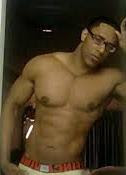It doesn't happen anymore. No one offers, and if you ask, the under-30 crowd says "What? Oh, I've always known that gay people exist. My parents had gay friends over all the time."
But in the 1980s and 1990s, we all grew up in a world where gay people were never mentioned, heterosexual desire assumed universal.. It was interesting to hear how someone gradually pieced together clues, measured evidence, and concluded that "it is not raining upstairs."
It was a bonding experience. It gave us a sense of camaraderie.
So here, preserved from the dark, quiet days, are the most interesting of the five hundred or so coming-out stories I've been told (Part 1):
Age 5: The Homosexuals
One day I was playing in the family room, and my father walked through with one of his friends. I heard him say: "...and we need to do something about the problem of homosexuals...." I didn't know what a "homosexual" was, but I knew that it had something to do with me.
Age 6: Louie the Lilac
I was watching the old Batman tv show, the episode where Milton Berle played Louie the Lilac, a villain who dressed in a lavender suit. I thought it was the most beautiful thing in the world. I asked my older brother, "Can I get a suit like that for Christmas?" He laughed and said "Only if you're a lilac!" Ever since then, I associated the word "lilac" with being gay.
Age 8: The Babysitter
When I was little, I had a male babysitter, a teenage boy from the neighborhood, and I liked to sit on his lap. I liked the warmth, the closeness -- and the feel of his basket! One night I overheard him talking to his friend: "Yeah, the kid's very affectionate. If I didn't know better, I'd think he had homosexual tendencies."
So "homosexual tendencies" meant "you like to sit on guys' laps."
Age 12: The Porn Magazines
When I was around 12 years old, my friends and I were walking through a wooded area near my house, when we saw some porn magazines that someone left lying on the ground. We started leafing through them, the other guys gushing over the naked ladies, you know, when I saw an article called "Inside a Gay Bar." I didn't know what "gay" meant, but I returned later to tear out the article and take it home. It was about me!
Age 13: The Sleepover
I was spending the night with my best friend, sleeping in the same bed, and in the middle of the night I woke up to him...well, fondling me.
"Hey, what are you doing?" I whispered, shocked.
"It's ok," he said. "All the guys do it. It doesn't mean you're queer if you think about girls."
So I tried to think about girls, but I kept imagining guys. That meant I was queer....
Age 13: The Alternative Prom
One day my mother, who taught high school English, came home and started complaining to my father: "You'll never guess what those idiots on the school board are up to now -- an alternative prom! I can't believe they would pander to the deviants like that!"
I had never heard of gay people before, so I asked "What's a deviant?"
Mom said "You don't need to know. It has nothing to do with you."
But I persisted, and finally she said, "A deviant is a pervert, a man who wants to go to the prom with another man."
Age 20: Getting Some "Cocks"
In the service I was stationed down in New Orleans, and when we had leave, one of the guys in my barracks said "Let's go down to Bourbon Street and get us some cocks!"
I didn't realize that there were guys in the world who liked guys, so I said "Cool! Let's go!"
Turns out that "cock" is Cajun slang for "girls," sort of like "chicks."
But the "damage" was done. I knew that gay people were out there somewhere. I just had to find them.
See also: Two Men Hugging.























